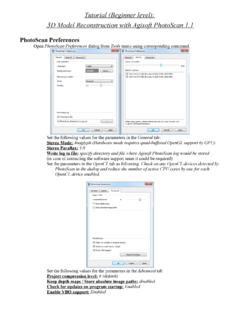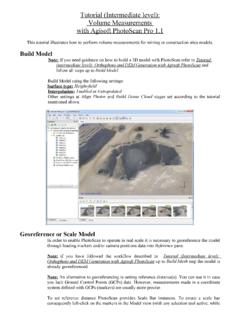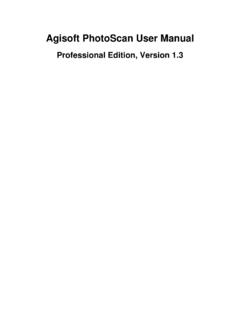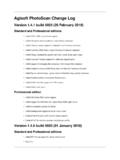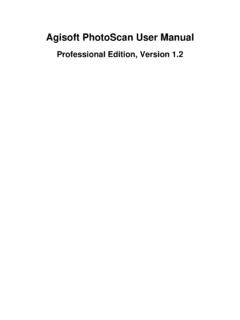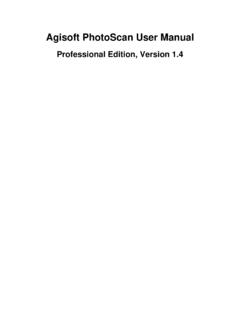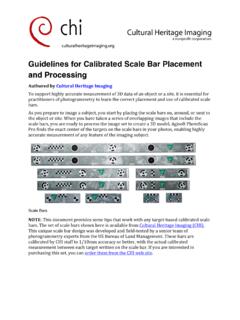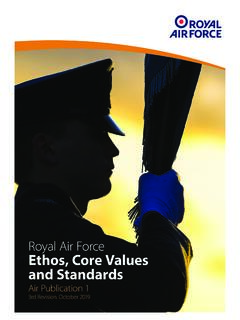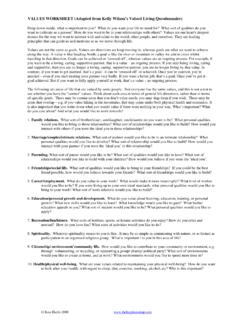Transcription of Tutorial (Beginner level): Orthomosaic and DEM Generation ...
1 Tutorial (Beginner level): Orthomosaic and DEM Generation with Agisoft PhotoScan Pro (with Ground Control Points). Overview Agisoft PhotoScan Professional allows to generate georeferenced dense point clouds, textured polygonal models, digital elevation models and orthomosaics from a set of overlapping images with the corresponding referencing information. This Tutorial describes the main processing steps of DEM/ Orthomosaic Generation workflow for a set of images with the ground control points. PhotoScan Preferences Open PhotoScan Preferences dialog using corresponding command from the Tools menu: Set the following values for the parameters on the General tab: Stereo Mode: Anaglyph (use Hardware if your graphic card supports Quad Buffered Stereo).
2 Stereo Parallax: Write log to file: specify directory where Agisoft PhotoScan log will be stored (in case of contacting the software support team it could be required). Set the parameters in the OpenCL tab as following: Check on any OpenCL devices detected by PhotoScan in the dialog and reduce the number of active CPU. cores by one for each OpenCL device enabled. Set the following values for the parameters on the Advanced tab: Project compression level: 6. Keep depth maps: enabled Store absolute image paths: disabled Check for updates on program startup: enabled Enable VBO support: enabled Add Photos To add photos select Add command from the Workflow menu or click Add Photos button located on Workspace toolbar.
3 In the Add Photos dialog browse the source folder and select files to be processed. Click Open button. Load Camera Positions At this step coordinate system for the future model is set using camera positions. Note: If camera positions are unknown this step could be skipped. The align photos procedure, however, will take more time in this case. Open Reference pane using the corresponding command from the View menu. Click Import button on the Reference pane toolbar and select the file containing camera positions information in the Open dialog. The easiest way is to load simple character-separated file (*.txt) that contains x- and y- coordinates and height for each camera position (camera orientation data, pitch, roll and yaw values, could also be imported, but the data is not obligatory to reference the model).
4 In the Import CSV dialog indicate the delimiter according to the structure of the file and select the row to start loading from. Note that # character indicates a commented line that is not counted while numbering the rows. Indicate for the program what parameter is specified in each column through setting correct column numbers in the Columns section of the dialog. Also it is recommended to specify valid coordinate system in the corresponding field for the values used for camera centers data. Check your settings in the sample data field in Import CSV dialog. Click OK button. The data will be loaded into the Reference pane. Import EXIF button located on the Reference pane can also be used to load camera positions information if EXIF meta-data is available.
5 Then click on the Settings button in the Reference pane and in the Reference Settings dialog select corresponding coordinate system from the list, if you have not selected it in the Import CSV dialog yet. Set up Camera Accuracy in meters and degrees according to the measurement accuracy: Ground Altitude should be specified in case of very oblique shooting. Click OK and camera positions will be marked in Model View using their geographic coordinates: If you do not see anything in the Model view, even though valid camera coordinates have been imported, please check that Show Cameras button is pressed on the Toolbar. Then click Reset View button also located on the Toolbar.
6 Check Camera Calibration Open Tools Menu Camera Calibration window. By default PhotoScan estimates intrinsic camera parameters during the camera alignment and optimization steps based on the Initial values derived from EXIF. In case pixel size and focal length (both in mm) are missing in the image EXIF and therefore in the camera calibration window, they can be input manually prior to the processing according to the data derived from the camera and lens specifications. If precalibrated camera is used, it is possible to load calibration data in one of the supported formats using Load button in the window. To prevent the precalibrated values from being adjusted by PhotoScan during processing, it is necessary to check on Fix Calibration flag.
7 PhotoScan can process the images taken by different cameras in the same project. In this case in the left frame of the Camera Calibration window multiple camera groups will appear, split by default according to the image resolution, focal length and pixel size. Calibration groups may also be split manually if it is necessary. In case ultra-wide or fisheye angle lens is used, it is recommended to switch camera type from Frame (default) to Fisheye value prior to processing. Align Photos At this stage PhotoScan finds matching points between overlapping images, estimates camera position for each photo and builds sparse point cloud model. Select Align Photos command from the Workflow menu.
8 Set the following recommended values for the parameters in the Align Photos dialog: Accuracy: High (lower accuracy setting can be used to get rough camera positions in a shorter time). Pair preselection: Reference (in case camera positions are unknown Generic preselection mode should be used). Constrain features by mask: Disabled (Enabled in case any areas have been masked prior to processing). Key point limit: 40000. Tie point limit: 10000. Click OK button to start photo alignment. In a short period of time (depends on the number of images in the project and their resolution) you will get sparse point cloud model shown in the Model view.
9 Camera positions and orientations are indicated by blue rectangles in the view window: Place Markers Markers are used to optimize camera positions and orientation data, which allows for better model referencing results. To generate accurately georeferenced Orthomosaic at least 10 15 ground control points (GCPs). should be distributed evenly within the area of interest. To be able to follow guided marker placement approach (which would be faster and easier), you need to reconstruct geometry first. Select Build Mesh command from the Workflow menu and specify following parameters in the Build Mesh dialog: Click OK button. Then, when geometry is built (it usually takes a few seconds to reconstruct mesh based on the sparse point cloud), open a photo where a GCP is visible in Photo View by double-clicking on its icon on the Photos pane.
10 Zoom in to locate the GCP on the photo and place a marker in the corresponding point of the image using Create Marker command from the photo context menu available on right-click on the opened photo in the corresponding position: Select the marker on the Reference pane. Then filter images in Photos pane using Filter by Markers option in the context menu available by right-clicking on the markers label in the Workspace pane. Now you need to check the marker location on every related photo and refine its position if necessary to provide maximum accuracy. Open each photo where the created marker is visible. Zoom in and drag the marker to the correct location while holding left mouse button.
